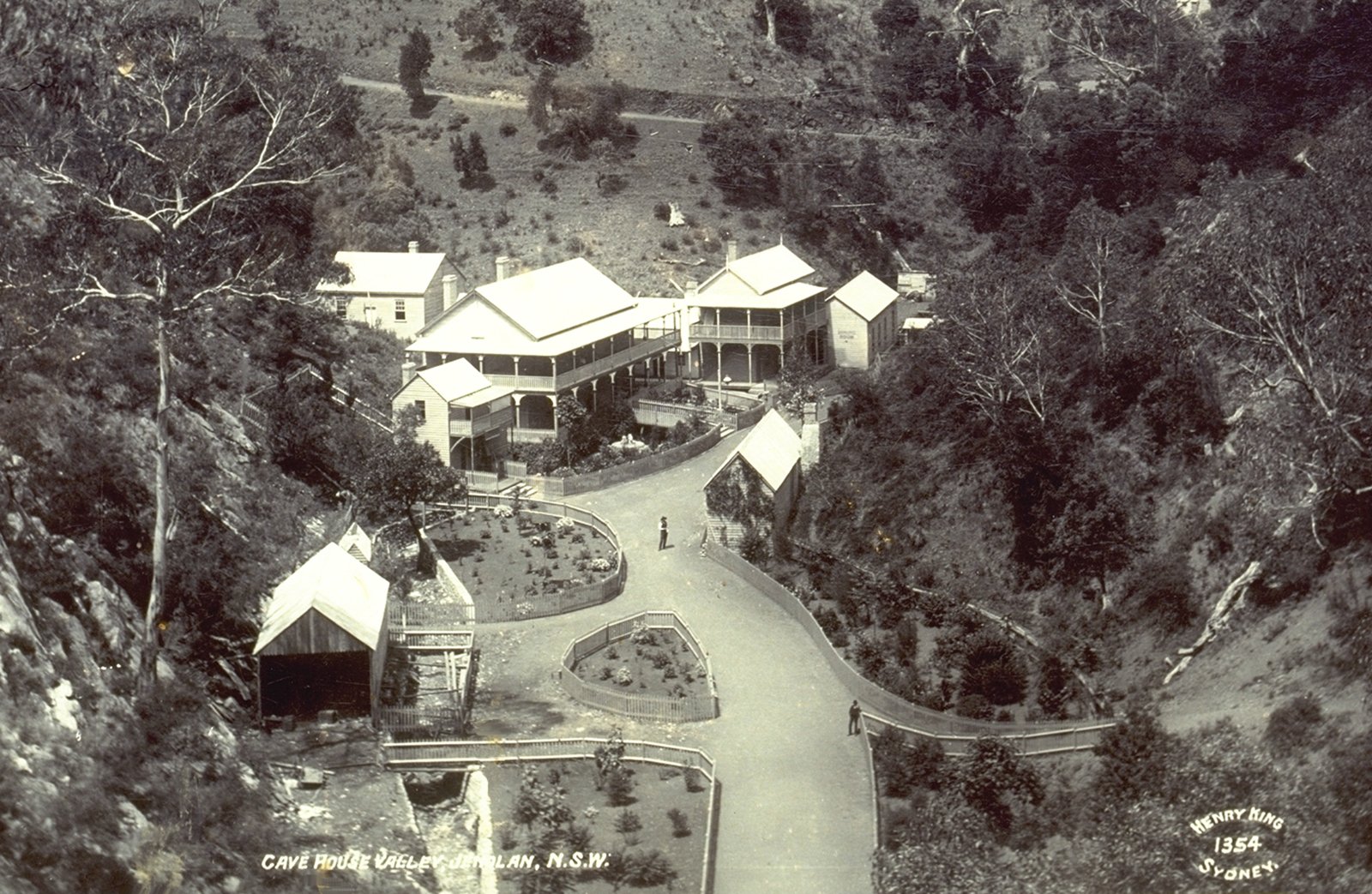History of Caves House
Jenolan Caves House
Although long known as “Binoomea” or “Dark Holes in the Mountain” to the Burra Burra Clan of the Gundungurra Nation, Europeans first discovered what are now known as the Jenolan Caves in circa 1838.
Due to the early difficulty in accessing Jenolan Caves, visitors would spend two or three days in the valley. These early visitors would sleep in the Grand Arch, ladies on the south side and gents to the north. A wooden dancing platform was constructed in 1869 and poles were subsequently erected at the four corners with drapes being used at night to reduce draughts.
As the fame of Jenolan Caves spread, calls were made for an improvement in the provided accommodation. Jeremiah Wilson, the first official “Keeper of the Caves” took out a two acre lease at the junction of Camp and Surveyors Creeks (the site of the current Caves Café) and built a kitchen and a five room slab hut. This was replaced with a two story wooden building in 1887 with a second two story building constructed in 1890. In 1895, a fire destroyed all of the building except the 1887 two story building. Jeremiah Wilson was not in a position to rebuild so he relinquished his lease.
Construction of the current Jenolan Caves House commenced in 1897 and was opened in 1898, being leased to Harry Smith who operated the NSW Railway Refreshment Rooms. This is the oldest part of Jenolan Caves House still in existence. The surviving wooden structure from the 1895 fire was relocated and a new limestone wing was constructed in its place and opened in 1908. The ground floor of this wing is now the Caves Café and the first floor is a conference room. A three story wing was added in 1916 and a further three story addition was completed and opened in 1925.
The Duke and Duchess of York (the future King George VI) stayed in what is now Room 302 and 303 in 1927 and toured the Left Imperial (Chifley) Cave. Today, Jenolan Caves House remains a popular destination and Chisholm’s Dining Room is one of the few grand hotel dining rooms remaining today.
Photo gallery (click a thumbnail)











